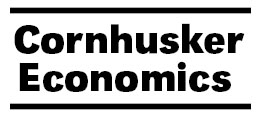Agricultural Economics, Department of

Cornhusker Economics
Date of this Version
9-23-2020
Document Type
Newsletter Issue
Abstract
The global pandemic has driven the whole country into an unprecedented crisis. As the months passed and the death toll climbed, the pandemic did some-thing else: it unveiled deep inequities within the country. Those getting sick and dying were disproportionately low-income racial and ethnographic minorities, most of them essential workers. According to the lat-est data from the Center for Disease Control and Prevention, the virus has overly affected Black people and Latinos (https://www.cdc.gov/coronavirus/2019-ncov/covid-data/covidview/index.html). Communities of color are also over represented among essential workers who are generally unable to work from home and more likely to come into contact with the virus stretching the racial wealth gap in the United States and making the richest wealthier while leaving many of the poorest without jobs (https://www.epi.org/blog/black-and-hispanic-workers-are-much-less-likely-to-be-able-to-work-from-home/).


Comments
Copyright 2020 University of Nebraska.